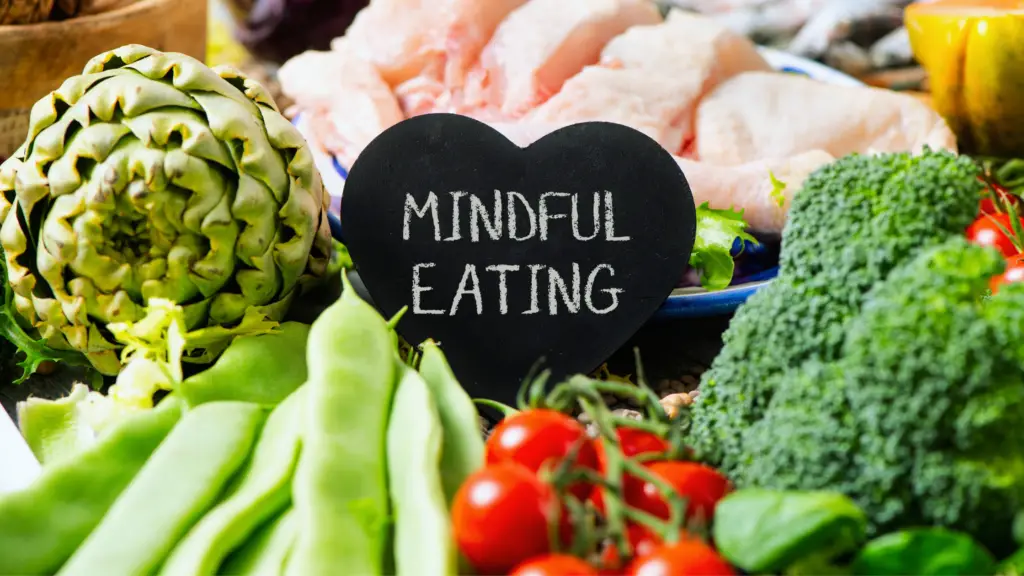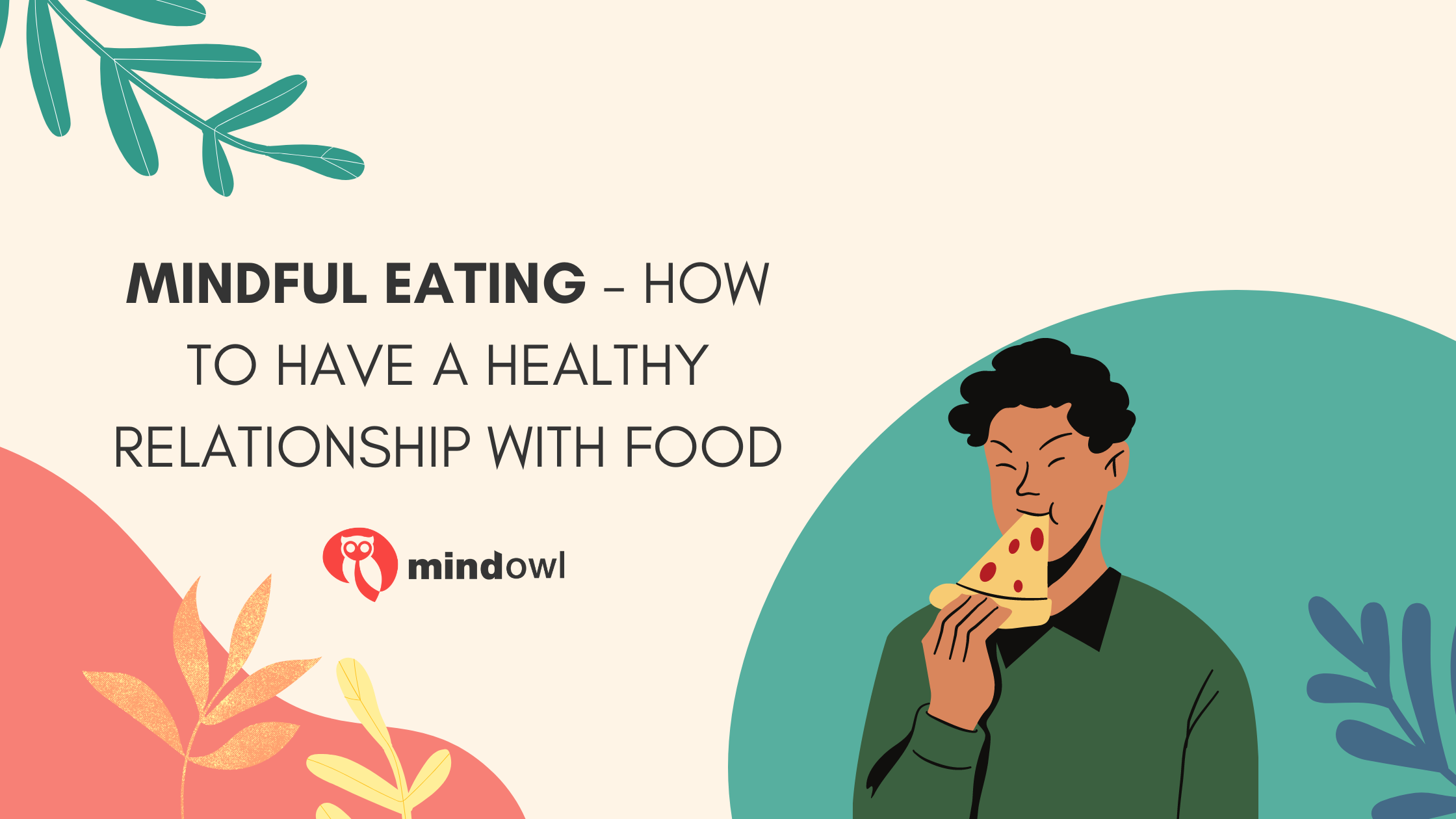In contrast to fad diets and weight loss programs, which encourage people to make unrealistic and unhealthy decisions, mindful eating involves attending carefully to what you eat and drink. It involves listening to your body’s needs and being in touch with the physical sensations of eating. You can practice mindful eating by making the choice to attend more carefully and mindfully to what you are putting in your body. It means slowing down, being patient, listening to how you feel when you eat or drink something new, and noting if there are any changes that occur in your reaction to food.
This article outlines a few simple ways of ensuring that you eat mindfully, and live a healthier and more fulfilling life.
What is Mindful Eating?
Mindfulness is a word that has become so embedded in our daily vernacular that it’s hard to imagine life without it. “Mindfulness” was originally coined by Dr Jon Kabat-Zin, who developed the mindfulness-based stress reduction program.
In this time of continual technological stimulation, most of us can’t possibly eat an entire meal alone without focusing on a Netflix show or a Youtube video. Mindful eating is the act of consciously choosing what to eat and how much by being fully aware of one’s feelings about food. Additionally, eating mindfully means taking time to enjoy your food, savouring every bite, and really focusing on what you’re eating. You take the time to appreciate the food you’re eating and as a result, you feel more satisfied after eating, and you’ll probably eat less too!
In the opinion of researchers Celina Framson and colleagues, mindful eating can be defined as:
“A non-judgmental attention to physical and emotional sensations associated with eating”.
It describes how people eat when they are paying attention to their food, rather than being distracted by other things. It is also part of what is known as mindful consumption, which is defined as “the process of making conscious choices about what we buy, where we get our food, and how we prepare it”.
In fact, mindless eating — a lack of awareness of the food we’re consuming — is helping create an obesity epidemic says nutritionist Dr Lilian Cheungh. Mindful eating has been proven to improve the type of food we consume, cut back our calorie intake, increase our feelings of fullness and our awareness of the sensation of fullness. It includes both the individual and the impact of our actions on others as we eat for the total health of the planet, not just for ourselves.
In many respects, Mediterranean foods such as vegetable oils, whole grains, seeds, nuts, seafood and fruit & veg are considered to be the classic mindful eating choices. They are rich in heart-healthy fats and high in nutrients that encourage healthy heart and brain function. Once you begin to mindfully eat, you might reduce the frequency you eat fast food, saturated fats and unsustainable food as you will be paying mindful attention to what you eat. As a general rule, mindful eating consists of paying full attention to the food you buy, prepare, serve, and consume. Although, the practice can be applied when eating a quick chicken and chips with friends!

Mindful Eating Practice Methods to Change Your Food Habits
Be it your early morning breakfast before work, or a huge meal out with friends over the holidays and new year, we are likely to eat mindlessly due to stress, lack of time or seasonal comfort foods. To practice mindful eating in a healthy way, you need to engage wholeheartedly with the practice, giving it your total awareness. When eating mindfully, instead of allowing your brain to run on autopilot mode, pour all your attention into the selection, preparation, serving and eating of the meal you are having.
Now, I know this might sound like a big ask – especially if you are imagining a more formal kind of mindful eating like you would find at a retreat, or in a tea ritual.
But, incorporating informal, mindful eating practices into your daily life like the ones on the following list will help you towards your goal of a more mindful relationship with food:
- Shop mindfully and make your shopping list mindfully. We all know the common advice, “don’t shop hungry”, but this is especially important when beginning to mindfully eat. You’ll inevitably make a lot of impulse decisions to buy more food than you need, and probably a lot of instant processed food. Similarly, you may be tempted to buy yourself a load of sweets and processed snacks as a treat for eating a healthy salad for lunch. The psychological effect of “moral licensing” means, the “healthy person who picks up the bag of greens is just as likely to pick up that bottle of red wine or bag of crisps. This is because we think that the healthy green salad will balance out whatever processed calories we pile on top. To stop this, when we shop we should mainly buy from the fresh produce section, and avoid the aisles of processed food and impulse buys placed strategically at the checkout.
- Engage all your senses. From the moment you select, prepare, cook, serve and eat your food make sure to bring all your senses to the experience. With the first bite of food, pay attention to the colours, smells, textures, sounds, and anything else that stands out to you. When you are chewing, see if you can identify the different seasonings that have been used or the quality of the cook on the food.
- Practice smaller portions. Begin with a small portion, maybe 9 inches worth if you are looking for a specific measurement, to encourage paying full attention with all your senses to your food. Those who begin to eat mindfully, as found in a 2013 study, begin to eat smaller portions naturally!
- Savour the food. When you sit down to eat your meal, make sure you chew each mouthful thoroughly so you can actually taste every ingredient, and savour your favourite tastes.
- Don’t skip meals. When you leave the moment you eat until you are starving, you don’t engage your senses but rather focus on filling the empty void in your stomach instead of enjoying the food in front of you.
Mindful Eating: Weight Loss and Binge Eating
For many sufferers of eating disorders, the role of mindfulness and mindful eating in their lives has been invaluable in creating a healthier mind-body relationship. By incorporating steps like the ones we just discussed, researchers have found that there is an inevitably positive relationship between mindful eating and healthy eating as people experience:
- Less impulsive eating,
- Reduced-calorie consumption,
- Healthier snack choices.
Trendy diets always focus on strict rules around eating like, what, when and how much to eat to guarantee a measurable weight loss. Mindful eating on the contrary is not another “fad diet” and its main goal is not to lose weight or prevent weight gain. But! There is a large chance that once you have put in place mindful eating habits, you will naturally shed some healthy amounts of weight. The goal is to help you appreciate and savour the food you are eating and be able to be fully present at the moment, rather than shedding large amounts of weight purely to look good.
Binge eating, or sometimes referred to as emotional or comfort eating, has been linked to several eating disorders and one study has shown that almost 70% of people with binge eating disorders are as a result obese. Practising mindful eating could seriously reduce any binge eating behaviours.
A study was conducted that monitored a 6-week mindful eating intervention for women with obesity. It was found that during this time, their binge eating episodes decreased from 4 times a week to 1.5 times, decreasing the severity of the episode when it did arise. From this, the study found that mindful eating can lead to a reduced eating disorder pathology as well as healthy weight loss and improved quality of life.
As we practice healthier mindful eating practices which incorporate a greater diversity of foods, we are less likely to binge on our comfort foods which encourages weight gain, and more likely to mindfully enjoy healthy foods which will encourage better overall health. For those who struggle with weight loss even after adopting healthier eating habits, gastric sleeve surgery UK offers a medical solution to support their journey. In the end, energy-rich and healthy foods that are both mentally and physically satisfying will become your first picks over a few, unhealthy fast foods.
Mindful eating not only aids in creating a positive association with food but also plays a crucial role in addressing deeper issues related to food consumption. For individuals struggling with patterns of disordered eating, incorporating mindfulness can significantly enhance the effectiveness of treatment strategies. Many programs focusing on eating disorder treatment in Utah emphasize the importance of mindfulness as a tool for fostering a healthier relationship with food. By integrating mindful practices, individuals can learn to navigate their emotional responses to food more effectively, ultimately leading to improved mental and physical well-being.

Mindful eating on the contrary is not another “fad diet” and its main goal is not to lose weight or prevent weight gain. But! There is a large chance that once you have put in place mindful eating habits, you will naturally shed some healthy amounts of weight.
Mindful Eating or Intuitive Eating?
When we are young we are innately intuitive eaters. By following our bodies’ cues, as babies and children, we know when we are hungry and need food, and when to pull away or push food away when full or satisfied. Rules like needing to finish our food before leaving the table, nutrition education and subsequent diet messaging that categorise our food for us cause us to lose touch with how to eat intuitively.
But, integrated into intuitive eating are the principles of mindful eating:
- Instincts,
- Emotions,
- Rational thinking about food.
By enacting these principles you can move past fear and judgment and find true satisfaction and peace when eating. Using a mindfulness intervention technique like mindful eating helps us to break free from the diet mentality completely and engage properly with our intuitive eating instinct. Despite their differences, mindful eating and intuitive eating both promote self-compassion, self-trust, and a better relationship with food in the long run.
Does Mindful Eating Work?
Mindful eating works as a way for you to enact an intuitive eating habit that will help you finally get off that dieting rollercoaster. Continually fasting, calorie restricting or accidentally binge eating becomes a habit for most. Mindful eating, however, isn’t a quick fix but a focused awareness that you build and use whenever you eat. It is more about how you eat than how much. That doesn’t mean you have to sacrifice convenience to follow this method. You can still practice mindful eating while taking advantage of services that offer delivery of keto meals, for example.
Mindful eating exercise
Are you still unsure of how mindful eating will work for you? Try this simple mindful eating exercise, Jon Kabat Zinn’s Raisin Exercise. In its simplest terms, it works this way:
- Hold: First, try taking a single raisin. Place it in the palm of your hand or between your finger and thumb, and hold it there. Don’t grab a handful, and try to resist the urge to chuck a few in your mouth. Take a deep breath and relax, using your intention to enact a full and focused awareness.
- See: Allow yourself the time to focus entirely on the raisin in front of you, like it is the first time you have seen one. Can you notice the texture of the skin, is it shiny or matte? Can you notice a pattern on the surface or any unique formations?
- Touch: Close your eyes and use the tips of your fingers to explore the raisin further, is there anything else you can notice without looking directly at it?
- Smell: Hold the raisin beneath your nose. With each inhalation, take in any smell, aroma, or fragrance that may arise. As you do this, notice anything that may be happening in your mouth or stomach.
- Place: Once you’re ready, place the raisin between your lips. Is there anything you can notice about what happens within your body? Does your stomach react, do you feel any sudden urges? Then, let it sit gently on your tongue and resist the urge to chew, continuing to note the different physical sensations you experience.
- Taste: When you notice the natural urge of physical hunger, prepare yourself to chew, considering how you can do this. Once you have decided, slowly begin to chew, noticing the flavours, tastes and textures that are created through each different chew. Can you notice any particular physical sensations, and can you describe the way they make you feel?
- Swallow: Before you swallow the raisin, I encourage you to notice your intention to swallow as it arises. This way you can consciously experience it before you swallow the raisin.
- Follow: Finally, see if you can feel what is left of the raisin moving down into your stomach, and sense all bodily sensations at once, noticing how you’re feeling after having completed this exercise.
This exercise is a perfect first step for a beginner, but also a lesson on what mindful eating can be. It gently draws your attention to each experience, as they happen, teaching you how to stay completely present in the moment. You are not being told what to experience, rather you are meant to simply note what and how you felt, as you experienced the moment.

5 of Our Favourite Books on Mindful Eating
We know that many of you will want to know all there is to know about mindful eating and the ways it can benefit you. There are many books out there on mindful eating, but these five stand out to us because they offer practical advice on how to implement mindfulness into your everyday life:

4. Mindful Eating: What Zen Masters Can Teach You About Eating and Mindfulness by Daron McClain
5. Mindful Eating on the Go: Practices for Eating with Awareness, Wherever You Are by Jan Chozen Bays
I hope with this article on mindful eating you feel we have provided you with the best tools and techniques to try this method for yourself. I am sure you will find your own ways to incorporate mindful eating into your life by exploring the different techniques and exercises we have discussed in this article. Everyone’s relationship to food and relationship with mindful eating is different, so explore different practises and exercises until you find the best fit for you! If you want to learn more about mindfulness, meditation and how to fit it into your life, check out our blog and stay tuned for our upcoming courses.
MindOwl Founder – My own struggles in life have led me to this path of understanding the human condition. I graduated with a bachelor’s degree in philosophy before completing a master’s degree in psychology at Regent’s University London. I then completed a postgraduate diploma in philosophical counselling before being trained in ACT (Acceptance and commitment therapy).
I’ve spent the last eight years studying the encounter of meditative practices with modern psychology.

